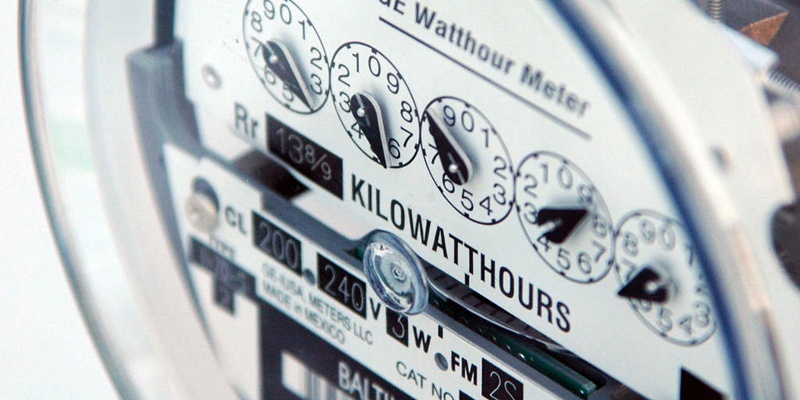Electricity customers are paying billions each year to subsidise investment in renewable energy.
A spokesman for the Scottish Government said meeting its 2020 renewables target would help to protect customers. “Increasing renewables leads to greater security in Scotland that will protect us from wild fluctuations in the oil and gas markets.”
Meanwhile ScottishPower and Ofgem will be called to urgent talks with MSPs to discuss the price hikes.
The first meeting of Holyrood’s economy, energy and tourism committee of the new parliament saw members quickly turn their attention to the spiralling energy costs. Deputy committee convener John Wilson insisted the firm should give evidence to the committee before the start of the summer recess on June 30.
“The announcement from ScottishPower will impact severely not only on the wider economy but on the economies of individual households,” he said. “It would be useful both to get ScottishPower and Ofgem to the committee to question the validity of the charges and the increases being proposed.
“I think it’s fair to say that ScottishPower has opened the door in terms of increased charges and other companies will soon follow.”
Committee convener Gavin Brown said he was concerned about calling in ScottishPower so soon and “picking on one energy company alone” before other energy companies have announced their prices.
But Mr Wilson stressed that time was of the essence, citing previous announcements by Ofgem that it expects energy costs “to go up anyway to pay for new infrastructure in the UK.”
The committee agreed to invite ScottishPower and Ofgem to give evidence to the committee before the summer recess.
Photo used under Creative Commons licence courtesy of Flickr user delgaudm.
In the week that ScottishPower triggered another round of price rises by announcing that domestic electricity bills are to go up by 10% on August 1, The Courier can reveal that £41.90 is added on to the average electric bill each year to subsidise wind farms and other green energy schemes, as well as schemes to improve home energy efficiency.
Energy watchdog Ofgem said 10% of each electricity bill now goes to renewable projects and the annual cost is rising each year. In 2007 it was just £7 a year.
Gas customers pay an average of £25.10 on top of their bills to help fund renewables and also have to pay £13 a year under the EU Emissions Trading Scheme. It means that customers using both gas and electricity pay nearly £100 a year more for the energy they use.
Industrial users face even heavier tariffs and those costs are, in turn, passed on to their own customers.
Although the charges levied on gas bills are less then those on electricity just 4% of the bill gas prices are rising at a much faster rate. ScottishPower, which is owned by the Spanish company Iberdrola, said gas bills would go up by 19% in August.
The UK Government wants to meet 30% of the country’s energy needs from renewable sources by 2020 while the Scottish Government is even more ambitious and intends to generate all of Scotland’s electricity from renewable sources such as on and offshore wind by the end of the decade.
Gas and electricity customers both pay £24 a year as part of the Carbon Emissions Reduction Target, which companies use to promote low-carbon technologies so that homeowners can reduce their carbon footprint.
Electricity customers also have to pay £16 under the Renewables Obligation. Proceeds from this are split between the main renewable energy sources wind receives 40% of the money, landfill gas 25%, biomass 20%, hydroelectric 12% and sewage gas receives just 3%.
By the time the Renewables Obligation ends in 2027 it is estimated customers will have contributed around £32 billion to investment in renewable energy.
Earlier this year six wind farms were given payments of £900,000 to switch off their turbines because the grid could not absorb the energy being produced. However, people who can generate their own electricity through renewable sources such as solar panels or wind turbines can reduce their bills through the Feed-In Tariff.
The UK’s six biggest energy suppliers must make regular payments to homes that contribute to the National Grid, although any loans used to pay for the equipment will be paid first. The amount depends on the scale of the installation.
However, according to Ofgem the big six are still overcharging customers, despite the need to pay for green projects and upgrades to the National Grid. A spokeswoman said, “It’s up to energy companies to explain their profits and prices to customers and investors. Ofgem’s role is to ensure that the market works in the interests of energy consumers.
“The conclusion of our retail market review shows that this is currently not the case. Suppliers are failing customers, which is why we want to radically overhaul the market.
“This includes proposals to cut the number of standard tariffs so customers can compare deals more easily. We also want to see the big six auctioning up to 20% of their power generation to increase transparency and to make it easier for others to enter the market.”
